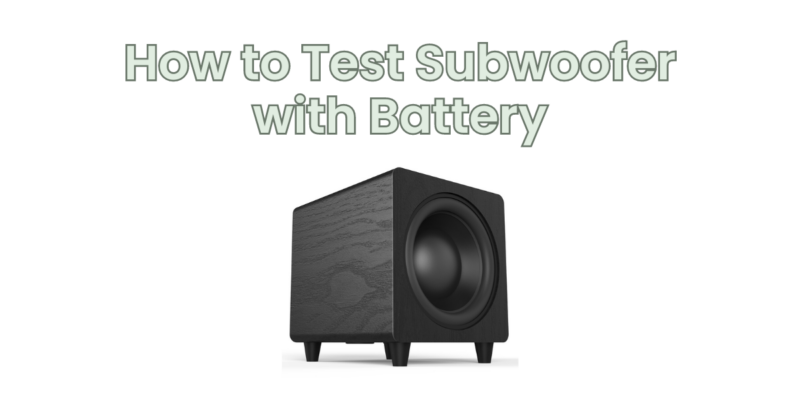Testing a subwoofer with a battery can help you determine if the speaker is working and producing sound. By applying a temporary power source directly to the subwoofer’s terminals, you can hear if the driver is operational. In this article, we will provide you with a step-by-step guide on how to test a subwoofer using a battery.
Here’s what you’ll need:
- 9V Battery: Obtain a fresh 9V battery, which is commonly used for this type of testing. Ensure that the battery is fully charged to obtain accurate results.
- Alligator Clips or Wire: To connect the battery to the subwoofer, you will need alligator clips or wires with stripped ends. These will serve as the connection points between the battery and subwoofer terminals.
Now, let’s proceed with the step-by-step guide:
Step 1: Disconnect the Subwoofer: Before conducting any tests, ensure that the subwoofer is disconnected from any power source or audio system to prevent electrical shocks or damage to the equipment.
Step 2: Prepare the Battery: Attach the alligator clips or stripped wires to the battery terminals. The positive (+) terminal of the battery should be connected to the corresponding positive terminal of the subwoofer, and the negative (-) terminal of the battery should be connected to the corresponding negative terminal of the subwoofer.
Step 3: Connect the Battery to the Subwoofer: Carefully touch the free ends of the alligator clips or wires to the respective terminals on the subwoofer. Ensure a secure and direct connection between the battery and subwoofer terminals. The positive (+) clip/wire should be connected to the positive terminal of the subwoofer, and the negative (-) clip/wire should be connected to the negative terminal of the subwoofer.
Step 4: Listen for Sound: Once the battery is connected to the subwoofer, you should listen for sound coming from the subwoofer. If the subwoofer is functioning correctly, you should hear a thump or a low-frequency sound when the battery is connected. This indicates that the subwoofer’s driver is operational.
Step 5: Test Each Subwoofer Individually: If you have multiple subwoofers, it’s important to test each one individually to ensure you can isolate any issues. Repeat the process for each subwoofer, connecting the battery and listening for sound.
Step 6: Inspect for Issues: While testing the subwoofer with a battery can help determine if the driver is operational, it does not provide a comprehensive evaluation of other potential issues. Take note of any abnormal sounds, rattling, or distortion that may indicate problems with the subwoofer’s cone, surround, or other components.
It’s important to note that testing a subwoofer with a battery provides a basic assessment of the driver’s functionality. It does not guarantee that the subwoofer will perform optimally when connected to an audio system with appropriate power and signal sources.
If you notice any significant issues or are unsure about the subwoofer’s performance, it is advisable to seek professional assistance from a speaker repair service or audio technician. They have the expertise and specialized equipment to diagnose and repair subwoofer issues accurately.
In conclusion, testing a subwoofer with a battery is a straightforward method to assess if the driver is operational and producing sound. By following the steps outlined above, you can quickly determine the functionality of your subwoofer. Remember to exercise caution, follow safety guidelines, and consult professionals for more complex issues or if you are uncertain about the results.


